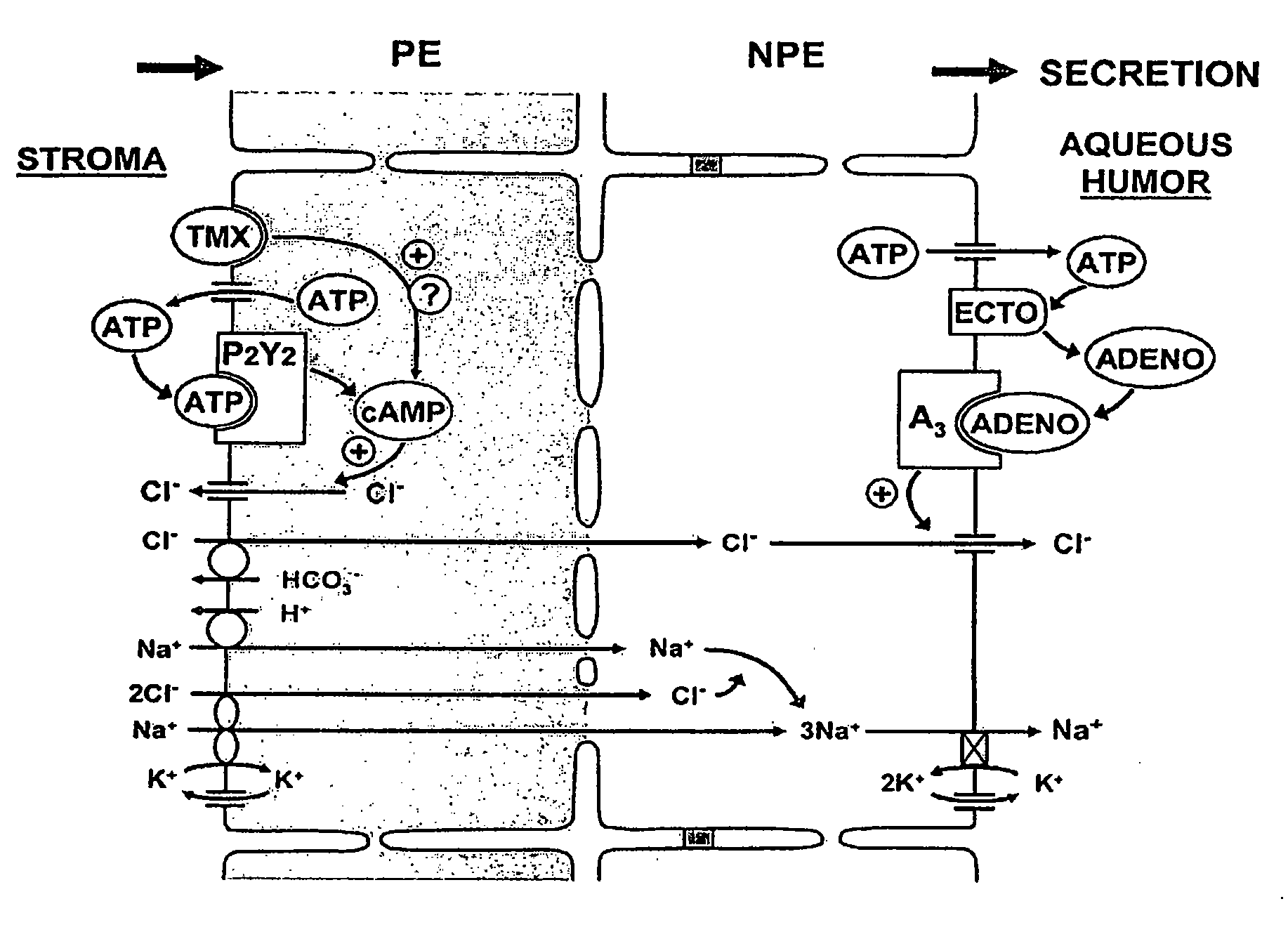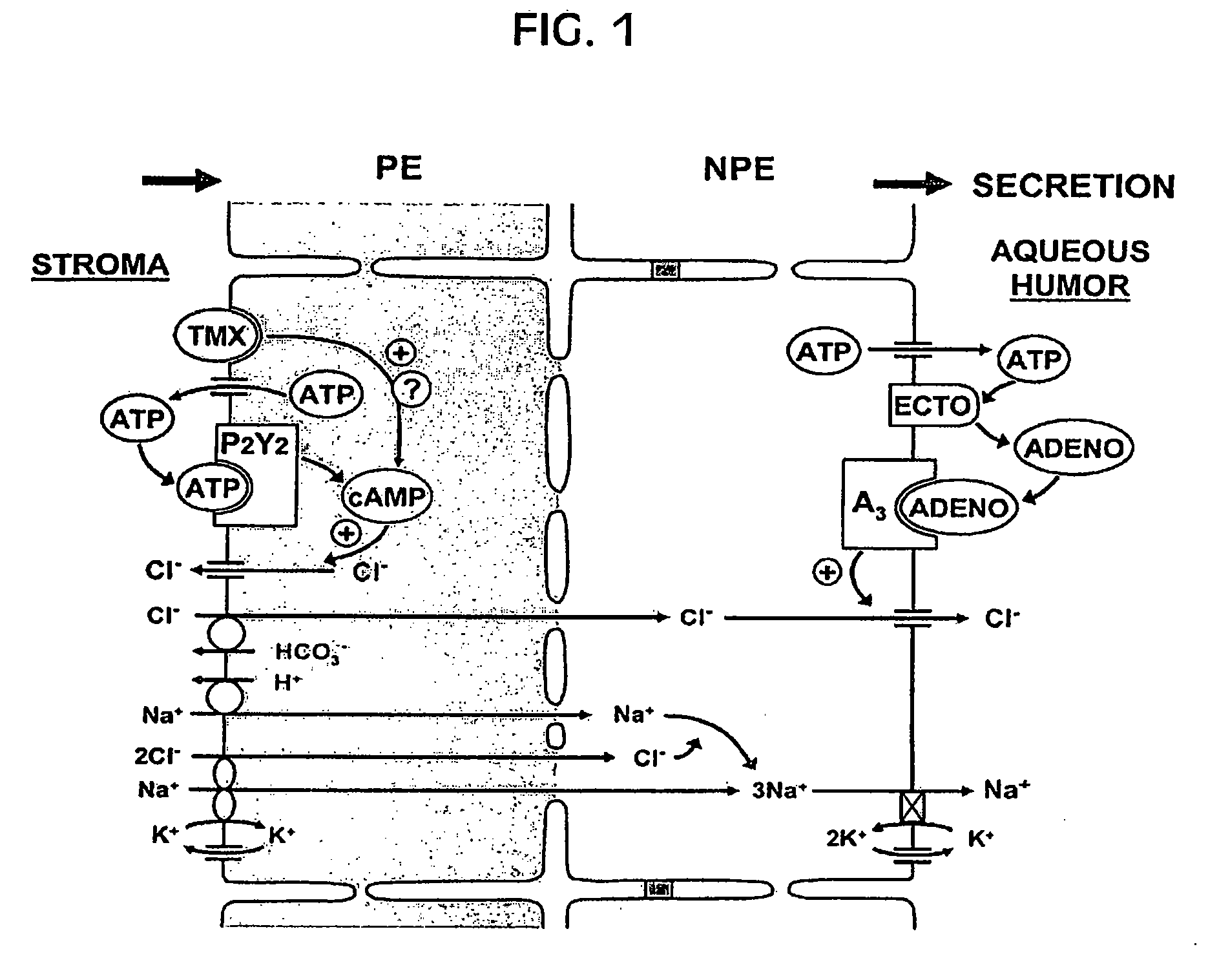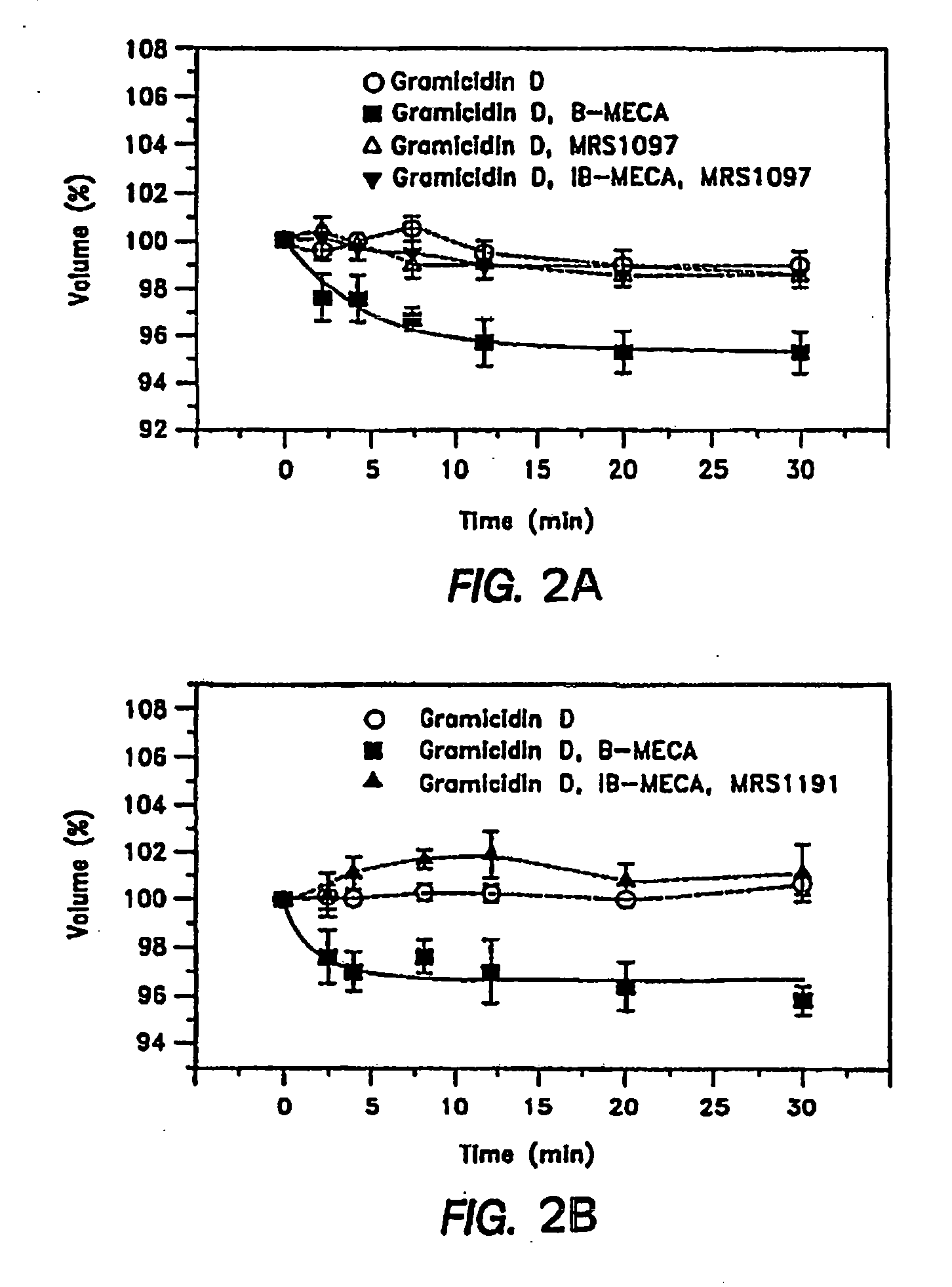Effective delivery of cross-species a3 adenosine-receptor antagonists to reduce intraocular pressure
a technology of adenosine receptor and adenosine subtype, which is applied in the direction of heterocyclic compound active ingredients, biocide, drug compositions, etc., can solve the problems of optical nerve atrophy, retinal ganglion cell death, and none of these drugs are satisfactory, and achieves improved efficacy, prolonged action, and reduced intraocular pressure
- Summary
- Abstract
- Description
- Claims
- Application Information
AI Technical Summary
Benefits of technology
Problems solved by technology
Method used
Image
Examples
example 1
Corneal Barrier to Delivery of Topical Drugs to Targets within the Eye
[0053]The effects of A3AR antagonists on mouse IOP have traditionally been measured by the invasive servo-null technique developed by the inventors for the small mouse eye, and which requires impalement of the cornea with a fine, hollow glass needle, whose tip diameter is about 5 micrometers (Avila et al., supra, 2001, 2002) However, in order to demonstrate the in vivo IOP-reducing effect of the A3AR-antagonist compounds, the testing techniques were refined. A pneumotonometer was adapted for measuring mouse IOP non-invasively (Avila et al., Invest. Opthalmol. Vis. Sci. 46:3274-3280, 2005)). Using this technique, it was found that it took 30 minutes for the A3AR-antagonist (MRS-1191) to begin lowering mouse IOP significantly after topical application to the eye, whereas the same drug begins to lower IOP within about a minute when IOP is measured with the invasive servo-null technique. Likewise, the increase in IOP ...
example 2
Species Independent Effect of A3AR-Antagonists In Vivo in an Animal Model
[0069]The A3AR-antagonists used in previous studies both blocked adenosine-triggered shrinkage of cultured human NPE cells and lowered IOP of mice. The NPE cells were from clone-4, derived from a primary culture of human non-pigmented ciliary epithelium (see, Martin-Vasallo et al., J Cell Physiol. 141:243-252 (1989)). However, the heterocyclic derivatives, such as the dihydropyridine MRS-1191 and the pyridine MRS-1523, used in those studies, displayed widely varying affinities for the A3AR of different species. This variability is illustrated by the very high binding affinities of the antagonists to rat, relative to human A3 receptors, ranging from 10 to >30,000 (Yang et al., supra, 2005). The non-generality of antagonist selectivity, therefore, had limited the ability to evaluate the potential clinical relevance of the known A3 antagonists in animal models, in which the A3 selectivity of the compounds could be...
example 3
Species Independent Effect of MRS-3820
[0077]In light of the foregoing cross-species results, a series of modifications of the two nucleoside-based A3AR antagonists, MRS-3642 and MRS-3771, were developed to retain their cross-species effectiveness as A3AR antagonists, and yet also to be sufficiently permeable across the cornea to produce rapid reductions in mouse IOP. This permitted a determination of each compound's efficacy by invasive measurements of IOP, and its ability to cross the cornea rapidly could be monitored by non-invasive measurements of IOP. A number of esters of MRS-3771 and 3642 were tested. Measured invasively, MRS-3824 was ineffective (Table 1). MRS-3833 reduced IOP slightly at 200 nM non-invasively, but was otherwise ineffective invasively and non-invasively (Table 1). MRS-3826 and -3827 lowered mouse IOP when measured invasively, but had no effect over the period of non-invasive measurement.
[0078]The nucleoside-based A3AR antagonist, MRS-3820, was found to be eff...
PUM
| Property | Measurement | Unit |
|---|---|---|
| Pressure | aaaaa | aaaaa |
Abstract
Description
Claims
Application Information
 Login to View More
Login to View More - R&D
- Intellectual Property
- Life Sciences
- Materials
- Tech Scout
- Unparalleled Data Quality
- Higher Quality Content
- 60% Fewer Hallucinations
Browse by: Latest US Patents, China's latest patents, Technical Efficacy Thesaurus, Application Domain, Technology Topic, Popular Technical Reports.
© 2025 PatSnap. All rights reserved.Legal|Privacy policy|Modern Slavery Act Transparency Statement|Sitemap|About US| Contact US: help@patsnap.com



